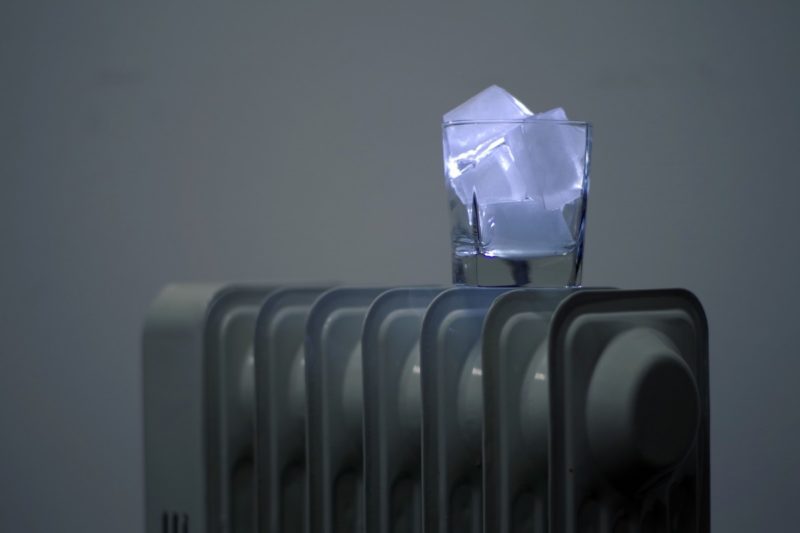Do you want to know how much electricity does an oil heater use? Don’t worry, and you have arrived at the right place. Oil heaters typically utilize 1400 watts of energy, which might be more or less based on how often heat a home requires.
Around 750W of electricity is used by sure single oil heaters. They accomplish the same purpose as regular oil heaters, but they’re meant to heat tiny spaces or keep your feet toasty under the desk.
Operating the 1400W oil heater simultaneously is comparable to powering three desktop game consoles or twin vacuum cleaners. The highest power rating of an oil heater’s heating element is 1400 watts, the same as ordinary electrical space heaters. Most of the models include a low-energy option of 800 or 900 watts, with some having a setting somewhere in between. Continue reading to discover more.
The Basics Of Oil Heater
A standard oil heater is a relatively straightforward mechanism. It comprises an oil-filled closed coil system, a heating component, a thermostat, and a control center, customarily intended to seem like a radiator. A thermostat checks the oil temperature, not just the room temperature, and sends a signal to turn off the electricity when the oil reaches the required temperature.
When the oil temperature drops underneath the cut-in temperature, the power is turned on. It’s not motor oil within the coils. Mineral oil, vegetable oil, or a commercial oil like Thermoil are the most common choices. Most electric space heaters, including oil-filled heaters, use a resistive element to create heat. They are potentially more cost-effective than exposed-element heaters since the heat generated is transferred to the oil instead of being radiated – and wasted – throughout the room.
After all, the oil emits warmth, though, but at a lesser rate. Once switched on, the heat source uses the same amount of energy as a resistance heater. Due to the heat sink given by the oil, that’s not always the situation. As a result, an oil heater requires less energy in the longterm than just an exposure heater beneath standard settings.
How Much Electricity Does Your Oil Heater Use?
So, how much electricity does an oil heater use? A heating element of an oil heater has a peak power rating of 1400 watts, which is the same as for typical space heaters. Most of the models offer a low-energy option of 800 or 1,200 watts, with others having a level in between. These heaters will consume electricity at the set rate whenever the element is turned on. When you pay the average national electricity cost of $0.10 per kWh, you’ll spend $0.12 per hour for max output and $0.11 per hour for minimum power. It charges just like operating a ceramic resistive heater with two power settings. An oil-filled heater might price anywhere between $0.05 to $0.6 per hour, relying on the energy tariff and power levels.
A distinction between oil heaters and other space heaters is that they conserve energy since the electricity they use is utilized to heat the oil rather than the air. Its thermostat may control the oil temperature very effectively than an exposed-element heater’s thermostat could check the ambient air temperature. This ensures that the element will only turn on once it is required. That warmth from the oil-filled coils should still escape into the air, which helps to cool the oil over time. Although the heat radiates gradually, it aids in keeping the component off for a prolonged time.
Is It True That Oil Heaters Are Power Efficient?
Annually, winter follows springtime. The temperature in some locations might drop so cold that the only option to remain hot is to run the heater continually. As a result, companies have created devices that can successfully perform the same tasks while having a minimal environmental impact. Oil heaters that are convectional heaters for home usage are introduced. They include oil and yet are heated by electricity. They don’t consume any oil either, but it is utilized as a heat reservoir or a buffering rather than as an energy source. It may also be a good idea to read about what makes oil heater so popular.
Advantages And Disadvantages Of Oil Heater
One of the most significant drawbacks of oil heaters is that the coils become quite hot whenever the heater is used. This might save energy. The heater must be conspicuously positioned in the room to function. On the bright side, the warmth from the coils is mild and comforting, with no fan-forced hot air to contend with. Furthermore, because an oil heater seems to have no moving components, it does not make any unpleasant noises.
An oil heater is best used to warm a well-insulated space and has minimal draughts. Even as the room’s temperature increases, the heater must produce less hot air to maintain the desired temperature, and the thermostat may turn off the element. Compared to an exposed-element device, such as a typical convection heater, it can significantly save energy.
It’s A Wrap!
We are delighted to know that you have learned how much electricity does an oil heater uses. Oil heaters typically utilize 1400 watts of energy, which might be more or less based on how often heat a home requires. Around 750W of electricity is used by sure single oil heaters. You may also want to read about what is an oil-filled heater and what is a waste oil haeater. Thank you, friends, for reading this article.

